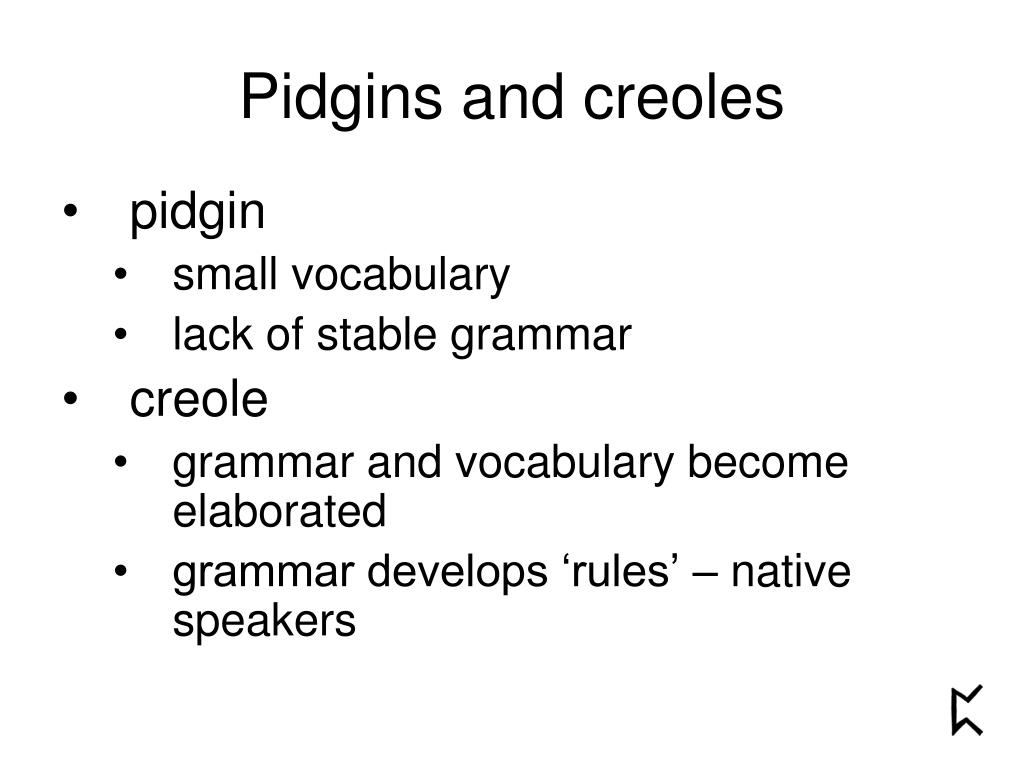
Typical Pidgin-English pamphlet dropped over New Guinea during WW2.Pidgins are “on-the-spot” languages that develop when people with no common language come into contact with each other. Touted as an ethnic identifier and point of pride by some, and as a progress-halting burden by others, these languages inspire no shortage of discussion. In Jamaica, Creole is an oft-discussed topic within government and education.

On Nigerian college campuses, one can see signs banning the use of pidgin and read scholarly articles praising its merits. Jamaica, Haiti, and Hawaii are just a few examples of former colonies that have adapted a Creole language into their cultures.Ĭreoles and pidgins have given rise to a good deal of controversy in modern times, both for linguistic and cultural reasons. Like pidgins, Creoles rely on a mixture of two parent languages, typically drawing most of their vocabularies from the dominant language and grammar from the subordinate. Eventually, if an idiom is “depidginized”, it becomes a Creole language, expanding into the general population of a country and acquiring native speakers as it is taught to the younger generations. Examples of pidgin languages exist in several African and South American countries. They arise out of necessity and survive so long as they are needed. Pidgin languages are nobody’s native tongues. The 19th century, however, saw an upswell in English-language education as pidgin came to be viewed as degrading. While a rudimentary sort of communication was necessary, Chinese merchants of the 17th and 18th centuries held the English language in low esteem and did not feel compelled to learn it fully.


Allegedly, the name comes from the mispronunciation of the word “business” by those selfsame Mandarin speakers that introduced so many colorful phrases into everyday English. Pidgin languages – originally a business vernacular – are characterized by a limited vocabulary, simplified grammar and syntax, and an unfussy disregard for subject-verb agreement. The result was a pidgin language that would be the mercantile lingua franca for over two centuries. Beginning in the 17th century, as English merchants crossed the Indian Ocean and sailed upwards through the South China Sea, they met with their Asian counterparts and, out of necessity, developed a means of communication that melded English words with Chinese sentence structure. What do popular English colloquialisms like “long time no see”, “lose face”, and “no can do” have in common? Far from neologisms, these simple, staccato utterances all originated centuries ago as a means of facilitating trade between the English and Chinese.


 0 kommentar(er)
0 kommentar(er)
